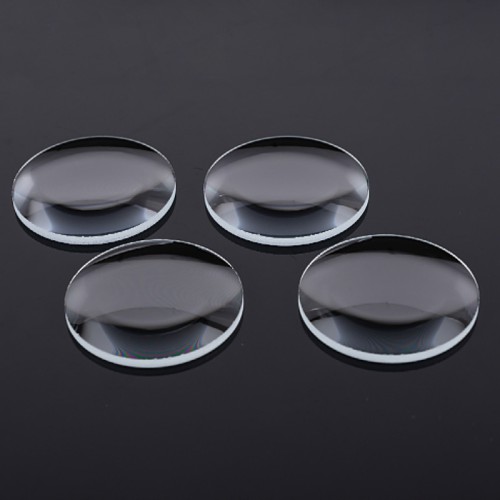Plano Concave Lens
Plano concave lenses are another type of optical lens with distinct characteristics compared to biconvex lenses. As the name suggests, plano-concave lenses have one flat (plano) surface and one concave surface, meaning that one side is curved inwards like the interior of a sphere while the other side is perfectly flat.
Tags: Optical Lens, Plano Concave Lens
Plano concave lenses are another type of optical lens with distinct characteristics compared to biconvex lenses. As the name suggests, plano-concave lenses have one flat (plano) surface and one concave surface, meaning that one side is curved inwards like the interior of a sphere while the other side is perfectly flat.

Key Features of Plano-Concave Lenses:
1.Mixed Curvature:
With one flat and one concave surface, these lenses have a unique profile that influences how they interact with light.
2.Negative Focal Length:
Unlike biconvex lenses, plano-concave lenses typically have a negative focal length because they diverge (spread out) light rays that pass through them, causing the appearance of the rays emanating from a virtual focus behind the lens.
3.Image Formation:
Plano concave lenses do not usually form real images of objects placed in front of them. Instead, they can create virtual images or simply diverge incoming light, which is useful for expanding light beams or increasing the focal length in combination with other lenses.
4.Magnification:
Since plano-concave lenses diverge light, they do not inherently magnify objects but can be used in systems designed to reduce the size of an image or spread light over a larger area.
Applications of Plano-Concave Lenses:
1.Beam Expansion:
In laser technology, plano-concave lenses are used to expand the diameter of a laser beam, which can be necessary for certain applications requiring a wide and uniform light distribution.
2.Collimation:
Although less common for this purpose than plano-convex lenses, plano-concave lenses can be used in conjunction with other lenses to adjust or improve beam collimation, especially when paired appropriately.
3.Adjusting Optical Systems:
They can be used in adjustable focus systems where the distance between lenses is varied to fine-tune focal lengths or correct for system aberrations.
4.Optical Coupling:
In fiber optics and other optical coupling applications, plano-concave lenses help to match the numerical aperture of different components or to expand light before it enters a fiber.
5.Anamorphic Optics:
In specialized applications, plano-concave lenses might be used in pairs or with other elements to change the aspect ratio of an image or the shape of a light beam.
Factors Affecting Function:
- Curvature of Concave Surface:
The depth of the concave curvature determines the degree of divergence and the effective focal length.
- Material Refractive Index:
The refractive index of the lens material still influences the amount of light bending, even though one surface is flat.
- Size and Thickness:
The overall size and thickness of the lens can impact the performance, especially in terms of optical aberrations.
Related Products
Biconvex Lens
A biconvex lens is a type of lens with two convex surfaces, meaning both sides curve outward like th..
Plano Concave Lens
Plano concave lenses are another type of optical lens with distinct characteristics compared to bico..
Plano Convex Lens
Plano convex lenses are optical lenses with one flat (plano) surface and one convex surface. This de..


